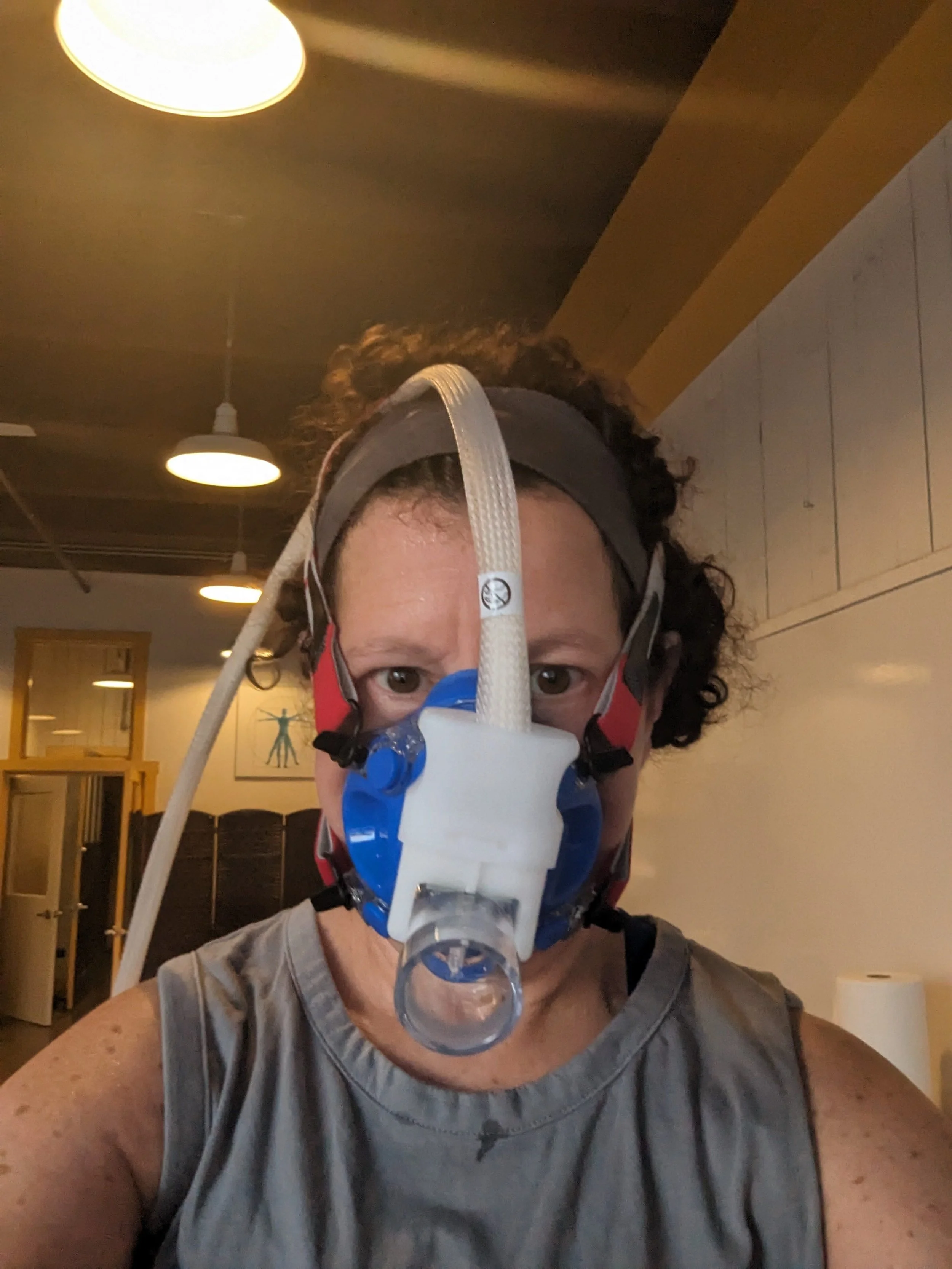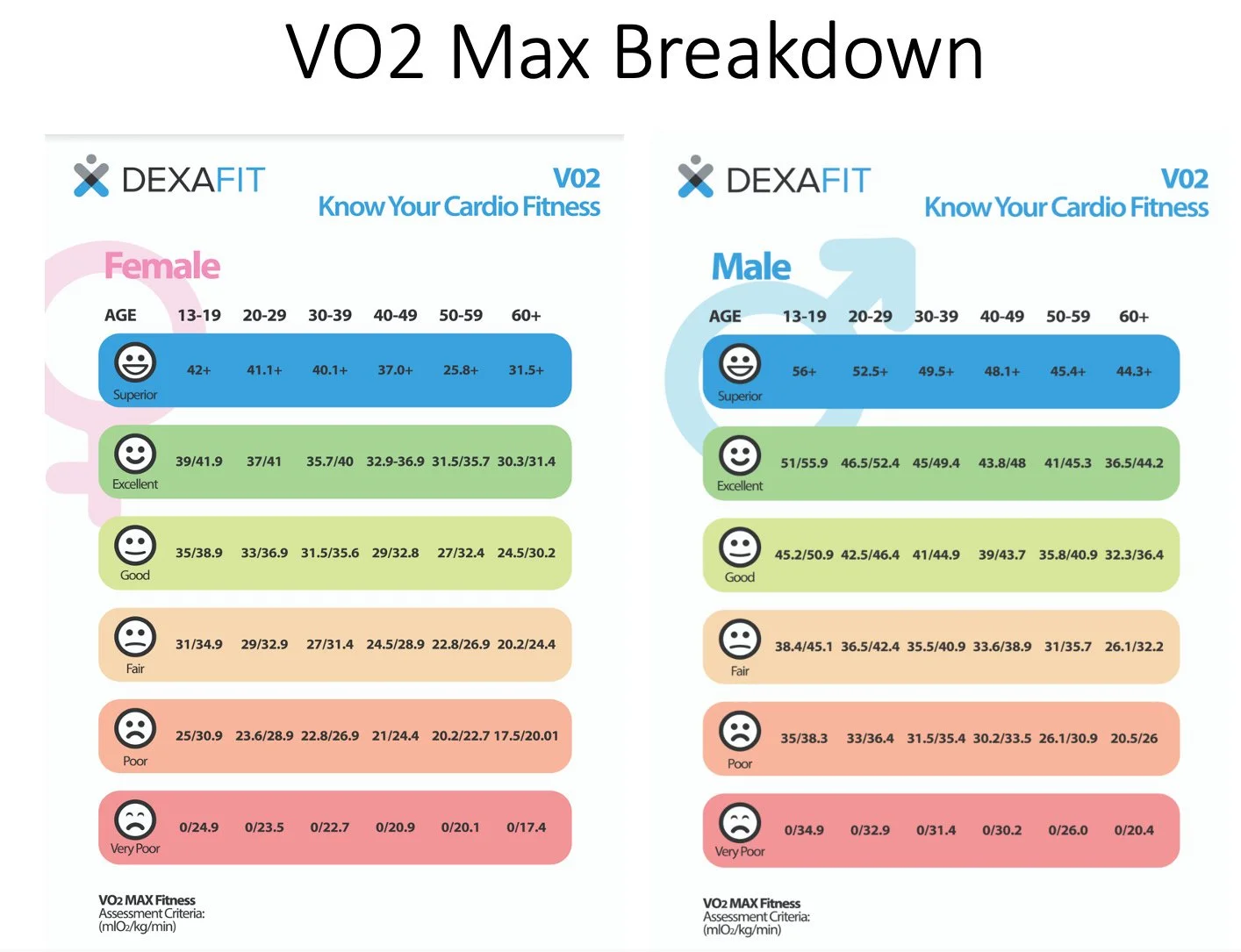Do you only run when chased? Learn how aerobic fitness impacts longevity.
[Estimated reading time: 4 minutes, 57 seconds.]
In yesterday’s post, I discussed Dr. Peter Attia’s two factors that have a positive association with longevity:
Strength
VO2 max
Yesterday was about strength. Today I am going to discuss VO2 max, which relates aerobic fitness.
I wasn’t planning on getting my VO2 max tested when I signed up for the body composition scan. But it wasn’t cost prohibitive and the place doing the scan had a package if I bought a combination of tests. I added the VO2 max and the Resting Metabolic Rate (RMR) tests to my appointment.
Getting ready for my VO2 max test on the treadmill. It’s a good look, right?
Do you question your stamina or how your stamina will hold up in the future?
At one point in my life, I did. I was struggling on local hikes. I had enough and decided to get healthy. I’ve touched upon it in previous posts. I’ll do a series on what actually happened along with the ups and downs.
When I first started exercising “for real” in 2004, my goal was to run around a local 2.8 mile path without dropping dead. I was diagnosed with rheumatoid arthritis a few years earlier. Plus my dad’s side of the family has a history of cardiac disease.
The runs felt awful. I did start making progress. I signed up with a local running coach. Made a couple of major adjustments in 2010 such as adding CrossFit in 2010 and switching running coaches.
Had some injuries along the way. Was diagnosed with lymphocytic colitis. Started hiking more. Built up to half-marathons and marathons. Getting a hip replacement put an end to running with any regularity. I still found ways to maintain my cardio.
How to think of heart rate zones?
If you’re doing a formal VO2 max test, you’ll also get a sense of your heart rate zones for training. When I was doing those longer distances, my heart rate zones were measured every couple of years. What does that mean?
If you have ever been on a cardio machine in a gym, such as a treadmill, exercise bike or elliptical, you probably have seen a sliding scale showing fat burning and cardio burning heart rate zones listed by decade. See below on the left side for an example.
Those are zones for the general population. They don’t take into account genetics, health history, etc. Depending on your intensity, you’re either burning more carbohydrates or fats.
Understanding these zones helped me to combine learning to run on feel with understanding my true exertion level. The goal was to improve my efficiency so I could race without feeling like I was killing myself.
The last time I measured my heart rate zones was in 2013. My current workout regimen consists of mixing Peloton rides with strength training. My weightlifting coach also has me doing some HIIT work a couple of times per week. Given the place where my body composition was being measured also performed this test, I figured why not?
Making lasting changes in your life can be overwhelming and intimidating. That’s why Go Long is here to help YOU through it all!
Heart rate zones are generally broken down into 5 buckets, with 5 being the most intense. These zones are defined uniformly but vary by person. I’ll cover 3 of them:
Zone 1 is the smallest stimulation your muscles receive. You burn little to no fat and are in recovery/rest mode.
Zone 2 is exercising at a level where you can carry on a conversation and it feels strained. The person you’re talking to will know you’re exercising. Most of my Peloton rides are here.
Zone 5 feels like your heart is going to burst and your legs feel like bricks. It is not sustainable for an extended period of time.
If you’ve ever completed Tabata or HIIT (high-intensity interval training) workouts, you’re vacillating between here and zones 1/2.
How does VO2 max fit in to this?
Let’s chat about VO2 max, which Dr. Attia considers the other indicator of longevity. VO2 max is also referred to as your maximal oxygen consumption. Simply put, it refers to the maximum amount of oxygen you can use during an intense effort. It is an excellent indicator of cardiovascular fitness.
According to Dr. Attia, studies around VO2 max indicate:
Moving your VO2 max from ‘low’ (bottom 25th percentile) to ‘below average’ (25th to 50th percentile) is associated with a 50% reduction in all-cause mortality.
Going from ‘low’ to ‘above average’ (50th to 75th percentile), the risk reduction is closer to 70%!
What my numbers said and what I’m doing about them
In excellent news, my VO2 max was better than anticipated. Another indicator you’re not getting rid of me without a fight.
I’m going to continue doing what I’ve been doing. Unlike body composition, I won’t re-test this for at least another 2 years barring something major happening.
My heart rate zones didn’t meaningfully change. I’ve amended my targets on my Peloton z2 rides.
I mentioned testing my RMR earlier. You have basal metabolic rate (BMR), which is sometimes used interchangeably with RMR. They are slightly different. BMR is how many calories you burn in a day to keep everything running without actually moving. RMR is BMR plus calories burned going to the bathroom, eating, sweating/shivering, walking, etc.
Why did I care about my RMR? I wanted to see how my lean mass (see yesterday’s post) contributed to the amount of calories I burn at rest.
I’ve talked about the benefits of strength training vs. cardio training.
You’re likely only exercising for a brief part of your day. The more muscle you have, the more calories you are burning when you aren’t exercising.
As I mentioned yesterday, I still have some work to do on changing the lean mass/body fat ratio. When I test my body composition, I’ll look to test my RMR.
Please note the above is what I have found what works for me.
I know it sounds overwhelming.
It doesn’t have to be.
Go Long can help.
P.S. — Friendly reminder to please check with your doctor or a licensed dietician before making any changes to your nutrition or exercise regimen.



